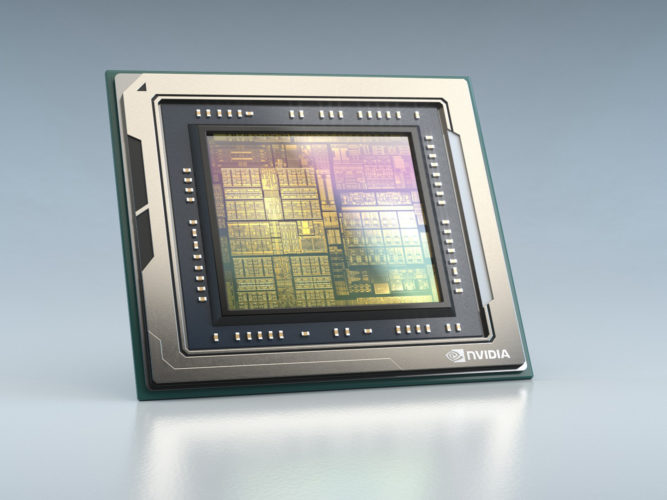The post How do you make perfect Cheetos? Use AI. appeared first on The AI Blog.
Fostering a culture of innovation
An Amazon principal scientist describes how an internal challenge has fostered greater collaboration and a sense of community among the company’s scientists.Read More
A Plus for Autonomous Trucking: Startup to Build Next-Gen Self-Driving Platform with NVIDIA DRIVE Orin
The autonomous trucking industry is about to get a major new addition.
Self-driving truck company Plus announced that its upcoming autonomous vehicle platform will be built on NVIDIA DRIVE Orin. This software-defined system will continuously improve upon the safety and efficiency of the delivery and logistics industry with high-performance compute and AI algorithms that can be updated over the air.
The self-driving system, known as PlusDrive, can be retrofitted to existing trucks or added as an upfit option on new vehicles by manufacturers. The company plans to roll out the next-generation platform in 2022 and has already received more than 10,000 pre-orders.
With DRIVE Orin at the center, PlusDrive uses lidar, radar and cameras to provide a 360-degree view of the truck’s surroundings. Data gathered through the sensors helps the system identify objects nearby, plan its course, predict the movement of those objects and control the vehicle to make its next move safely.
Innovating an Industry
Trucking has played an increasingly vital role in the world economy. For example, commercial vehicles transport more than 70 percent of all freight in the U.S. as e-commerce and next-day delivery have skyrocketed in popularity.
These trends come as driver shortages accelerate. The American Trucking Association estimates the industry could be in need of 160,000 drivers by 2028, in addition to limits on the amount of hours drivers can consecutively work that restrict operation. With the ability to efficiently operate around the clock, autonomous trucks promise to ease much of these industry pressures.
In contrast to lighter passenger vehicles, trucks can total 80,000 pounds with a fully loaded trailer and need a longer time to come to a stop. Developing autonomous commercial vehicles requires a system that can perceive long distances in real time to enable these trucks to safely maneuver.
By leveraging DRIVE Orin, Plus is building an intelligent, software-defined solution to address these challenges in the near term.
Big Brains for Big Rigs
Autonomous vehicles require high-performance compute for truly intelligent operation.
NVIDIA Orin is a system-on-a-chip born out of the data center. It achieves 254 TOPS — nearly 8x the performance of the previous generation Xavier SoC — and is designed to handle the large number of applications and deep neural networks that run simultaneously in autonomous trucks, while achieving systematic safety standards such as ISO 26262 ASIL-D.
This massive compute capability ensures the PlusDrive system is continuously learning, expanding the environments and situations in which it can operate autonomously.
“The greatest computing power is needed to process the trillions of operations that our autonomous driving system runs every second,” said Hao Zheng, Plus CTO and co-founder. “NVIDIA Orin is a natural choice for us.”
Plus is also a member of NVIDIA Inception, an accelerator program for startups in the AI and data science fields.
“The early access to NVIDIA’s autonomous vehicle technologies roadmap and solutions through the Inception program enables us to evaluate and adopt the latest hardware to provide the powerful real time performance required of our autonomous trucking system,” Zheng said.
Software-Defined Progress
Plus has already achieved significant self-driving milestones, and with a new software-defined platform, the company is giving itself plenty of room to excel further.
In 2019, Plus made history in the U.S. by successfully completing a cross-country autonomous trucking route in just three days. The company has conducted testing in 17 states and is currently operating commercial pilots with leading shipping companies in both the U.S. and China.
With the new Orin-based system, PlusDrive’s capabilities will continue to get better as AI technology advances. Orin’s massive compute headroom makes it easier to integrate and update advanced software features as they’re developed, enabling these intelligent trucks to continue down the open road of safer, more efficient delivery and logistics.
The post A Plus for Autonomous Trucking: Startup to Build Next-Gen Self-Driving Platform with NVIDIA DRIVE Orin appeared first on The Official NVIDIA Blog.
From Audi to Zoox: Autonomous Vehicle Innovators to Showcase Latest Breakthroughs at GTC 2021
This April, learn about the future of AI-powered transportation from those who are building it.
The NVIDIA GPU Technology Conference returns to the virtual stage April 12-16, featuring autonomous vehicle leaders in a range of talks, panels and virtual networking events. Attendees will also have access to hands-on training for self-driving development and other deep learning topics. Registration is free of charge.
Experience the latest advancements in safer, more efficient transportation, from training in the data center, to high-fidelity simulation testing, to new robotaxi and autonomous trucking pilots around the world.
With digital networking events and sessions with live Q&A, GTC is the only place where it’s possible to interact with researchers, engineers, developers and technologists in the autonomous vehicle space, as well as healthcare, robotics, graphics and numerous other industries.
The week will kick off with a not-to-be-missed opening keynote from NVIDIA founder and CEO Jensen Huang that will be packed with the latest NVIDIA news and breakthroughs.
Here’s a sneak peek at the automotive offerings at this year’s event.
Expert Lineup
With rapid advances in AI technology, it can be difficult to follow the flurry of headlines and announcements surrounding autonomous vehicles. GTC provides the unique opportunity to hear about these innovations from those in the trenches of self-driving development — from global automakers and suppliers to startups and researchers.
Automotive session highlights include:
- Jesse Levinson, CTO and co-founder of Zoox, sits down for a fireside chat on the robotaxi startup’s recently unveiled vehicle and upcoming technology roadmap.
- Hildegard Wortmann, member of the board of management at Audi, discusses how the global automaker is addressing the largest transformation in the history of the automotive industry, driven by digitalization, electrification and sustainability.
- Mo ElShenawy, senior vice president of engineering at Cruise, covers the challenges and benefits of building an autonomous vehicle from the ground up.
- Raquel Urtasun, professor at University of Toronto and chief scientist at Uber ATG Toronto, outlines the upcoming autonomous future, where robotics and AI are intertwined in daily life, and the technological challenges that remain to achieve this new era.
- Gavriel State, senior director of system software at NVIDIA, showcases the NVIDIA DRIVE Sim platform on Omniverse, generating synthetic data to comprehensively train deep neural networks for autonomous vehicle applications.
- Cetin Mericli, CEO of Locomation, explains the technology as well as the challenges behind human-guided autonomous convoy systems for self-driving long-haul trucks.
Give AI a Try
Attendees don’t just hear about AI innovation at GTC, they can get hands on with new deep learning techniques to push technology further.
Courses hosted by the NVIDIA Deep Learning Institute provide a foundation for developing AI applications, including autonomous driving. In Deep Learning for Autonomous Vehicles — Perception, DLI attendees can learn how to design, train and deploy deep neural networks and optimize perception components for autonomous vehicles using the NVIDIA DRIVE development platform.
Additional topics include the fundamentals of deep learning, natural language processing and deep learning for multiple GPUs.
Take advantage of free GTC registration today. Short, hands-on DLI training sessions are available at no charge, while full-day workshops are priced at $249.
Don’t miss out on the only opportunity to meet, listen to and learn from the biggest stars in AI and autonomous vehicle technology.
The post From Audi to Zoox: Autonomous Vehicle Innovators to Showcase Latest Breakthroughs at GTC 2021 appeared first on The Official NVIDIA Blog.
How to Build Your Game Library in the Cloud
With GeForce NOW, over 5 million gamers are playing their favorite games in the cloud on PC, Mac, Chromebook, NVIDIA SHIELD TV, Android and iOS devices.
With over 800 instantly available games and 80+ free-to-play games, there’s something for everyone. And there are multiple ways to build your library.
We’ll review how to sync your Steam game catalog, search for games, add games to your library, and explain the difference between Instant Access and Single Session games.
Start with a Steam Sync
GeForce NOW members, on average, have about 50 games in their Steam catalog. The quickest and easiest way to find all the instant access games you already own is by using the Game Sync option.
Simply launch GeForce NOW, select the Sync Your Games tile and log in to Steam. Now all your GeForce NOW supported Steam games appear in your GeForce NOW library.
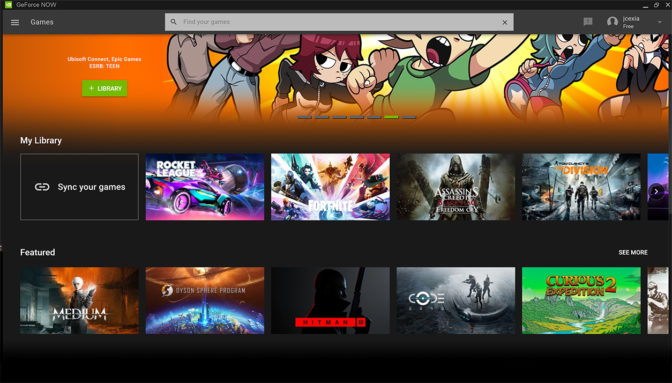 Sync your entire Steam game library in about one minute.
Sync your entire Steam game library in about one minute.
Members can also sync their Steam library by going to Settings > Game Sync.
Once your Steam account is authorized, you can update your GeForce NOW library from Settings > Game Sync every time you purchase a new Steam game. It’s the easiest way to keep your games catalog up to date in the GeForce NOW app.
Discover Games on GeForce NOW
The complete GeForce NOW games list is available online, including the latest releases.
Members can also find games in GeForce NOW using the search function, a powerful tool that lets you search by game title, developer, publisher, genre or keyword. Try searching for “kittens” and see what you find.
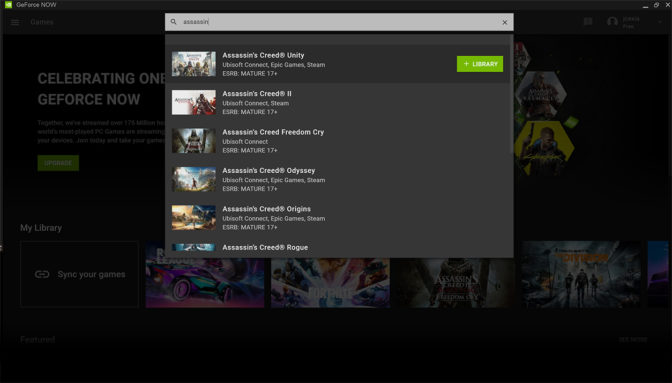
GeForce NOW expands its games library each week. The latest games are available day-and-date, while back catalog games are added every Thursday. Check back regularly to see what’s new.
Add Your Games to Your GeForce NOW Library
Owners of games from Ubisoft Connect, Epic Games Store (looking at you, Fortnite fans) or custom game launchers can search for games and manually add them to My Library by clicking +LIBRARY.
After that, click PLAY and if it’s the first time playing that game, just sign in to your account, when prompted, and you’re ready to game.
Suddenly your games are available on all the devices you own.
Buying Games to Play with GeForce NOW
GeForce NOW is a powerful gaming PC in the cloud — not a store.
Even though it’s not a store, members can still buy Steam games while in the app. There are two ways to do this. Add the game to your library, click PLAY, log in to Steam and purchase as you normally would. Or launch Steam to browse and make purchases.
For other game stores, or custom game launchers, you can purchase a supported game through the respective store, then go back into the GeForce NOW app to add it as outlined above.
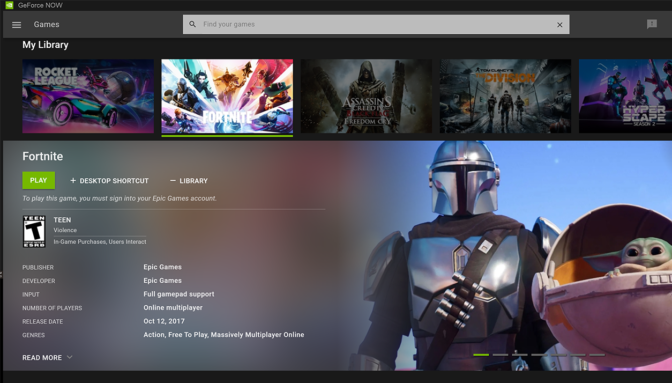 Discover a game you want to play? Find which store it’s supported on in the game page.
Discover a game you want to play? Find which store it’s supported on in the game page.
Featured GeForce NOW supported games are “Instant Access.” These appear within the app and can be added to your GeForce NOW library in less than a minute, all with streaming optimizations applied automatically for optimal graphics settings.
Don’t forget to check out weekly free games on the Epic Games Store, which are often supported on GeForce NOW.
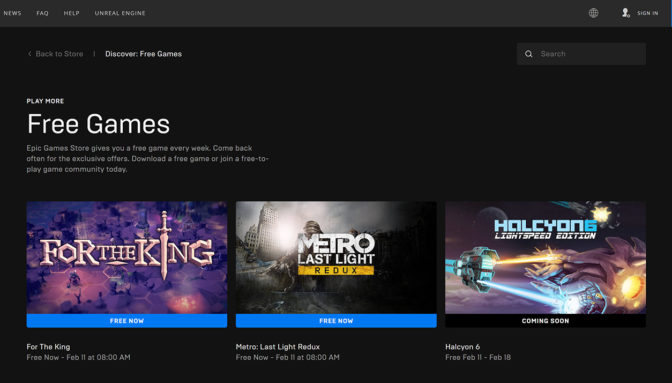
Game Selection Explained
It’s important to remember how new cloud gaming is to NVIDIA and, especially, game publishers. Adding games to a new platform is a critical decision for publishers. Remember what Netflix was like when it first launched? Sending DVDs through the mail? Bold, but undeniably forward-thinking.
GeForce NOW uses an opt-in process to make it easy for developers and publishers to join the service. NVIDIA signs an agreement with every game developer before publishing their titles on GeForce NOW. There is no cost for developers — games just run without difficult porting requirements — helping them reach millions of players who don’t have game-ready PCs.
Now, Get YOUR Game On
GeForce NOW supports more than 800 games in total. More than 80 of those games are free-to-play. That’s a great way to start building your library, especially for members who are new to PC gaming.
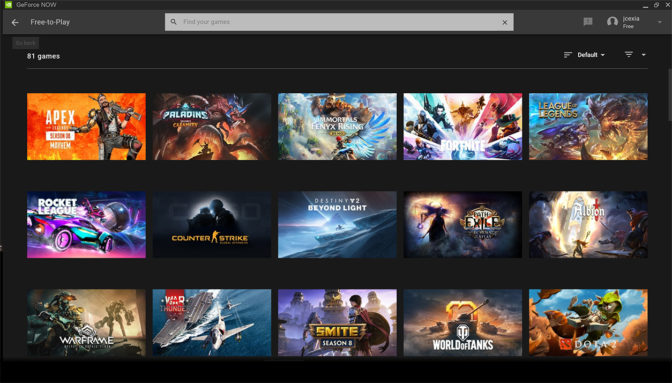 Members can build their library with +80 (and counting) free-to-play games.
Members can build their library with +80 (and counting) free-to-play games.
Sign up, download the app, browse a wide selection of titles, click the game of your choice and begin your cloud gaming journey with GeForce NOW.
Editor’s note: This is the second in a series on the GeForce NOW game-streaming service, how it works and where it’s going next. To learn more about cloud gaming, and the origins of GeForce NOW, read part one: GeForce NOW Explained: What is Cloud Gaming?
In our next blog, we’ll talk about latency, what it is and tips to improve your GeForce NOW experience.
Follow GeForce NOW on Facebook and Twitter and stay up to date on the latest features and game launches.
The post How to Build Your Game Library in the Cloud appeared first on The Official NVIDIA Blog.
Innovators, Researchers, Industry Leaders: Meet the Women Headlining at GTC
An A-list of female AI researchers and industry executives will take the stage at next month’s GPU Technology Conference to share the latest breakthroughs in every industry imaginable.
Recognized in Forbes as a top conference for women to attend to further their careers in AI, GTC runs online, April 12-16, and is set to draw tens of thousands of technologists, business leaders and creators from around the world.
GTC will kick off with a livestreamed keynote by NVIDIA founder and CEO Jensen Huang, and feature 1,300 speaker sessions, including hundreds from standout women speakers.
Industry, Public Sector Luminaries
AI and accelerated applications are driving innovations across the public and private sectors, spanning healthcare, robotics, design and more. At GTC, Danielle Merfeld, vice president and chief technology officer of GE Renewable Energy, will present a session, as will Jie Chen, managing director in corporate model risk at Wells Fargo.
Audi’s Hildegard Wortmann, member of the company’s board of management, will deliver a talk on digitalization, electrification and sustainability in the automotive industry. And Vicki Dobbs Beck, executive in charge at visual effects studio ILMxLAB, will speak about immersive entertainment.
Speakers from the federal sector include Lauren Knausenberger, chief information officer of the U.S. Air Force, and Suzette Kent, former federal chief information officer of the United States.
Pioneering AI, HPC Researchers
Several research luminaries will speak at GTC, including Rommie Amaro of the University of California at San Diego, winner of a special Gordon Bell Prize for work fighting COVID-19. So too will another pioneer in AI and healthcare, Daphne Koller, adjunct professor of computer science and pathology at Stanford University.
Leaders from NVIDIA Research — including Anima Anandkumar, director of machine learning research; Sanja Fidler, director of AI; and Kate Kallot, head of emerging areas — will present groundbreaking work. Raquel Urtasun, professor at the University of Toronto, will discuss her work in machine perception for self-driving cars.
Female Founders
The number of female-founded companies has doubled since 2009, a Crunchbase report found in 2019. GTC features female founders from around the world, such as Nigeria-based Ada Nduka Oyom, founder of the nonprofit organization She Code Africa.
Nora Khaldi, founder and CEO of Ireland-based startup Nuritas, will speak at GTC about how AI startups are revolutionizing healthcare around the world. And from Silicon Valley, Inga Petryaevskaya, co-founder and CEO of virtual reality startup Tvori, will present a talk on the role of AI startups in media and entertainment.
Advancing Inclusion at GTC
In addition to women speakers, GTC has grown its representation of female attendees by almost 4x since 2017 — and strengthened support for underrepresented developers and scientists through education, training and networking opportunities.
We’ve partnered with women in a variety of tech groups, and boosted GTC participation across underrepresented developer communities by working with organizations such as the National Society of Black Engineers, Black in AI and Latinx in AI to offer access to GTC content and online training from NVIDIA’s Deep Learning Institute.
This GTC, NVIDIA’s Women in Technology employee community is hosting an all-female panel sharing tools, strategies and frameworks to keep up with the pace of AI innovation during the pandemic. The group will also hold a networking event hosted by NVIDIA women and fellow industry leaders.
Registration for GTC is free, and provides access to more than 1,300 talks as well as dozens of hands-on training sessions, demos and networking events.
Main image shows GTC speakers (clockwise from top left) Kate Kallot, Raquel Urtasun, Jie Chen and Daphne Koller.
The post Innovators, Researchers, Industry Leaders: Meet the Women Headlining at GTC appeared first on The Official NVIDIA Blog.
How Suite It Is: NVIDIA and VMware Deliver AI-Ready Enterprise Platform
As enterprises modernize their data centers to power AI-driven applications and data science, NVIDIA and VMware are making it easier than ever to develop and deploy a multitude of different AI workloads in the modern hybrid cloud.
The companies have teamed up to optimize the just-announced update to vSphere — VMware vSphere 7 Update 2 — for AI applications with the NVIDIA AI Enterprise software suite (see Figure 1 below). This combination enables scale-out, multi-node performance and compatibility for a vast set of accelerated CUDA applications, AI frameworks, models and SDKs for the hundreds of thousands of enterprises that use vSphere for server virtualization.
Through this first-of-its-kind industry collaboration, AI researchers, data scientists and developers gain the software they need to deliver successful AI projects, while IT professionals acquire the ability to support AI using the tools they’re most familiar with for managing large-scale data centers, without compromise.

One Suite Package for AI Enterprise
NVIDIA AI Enterprise is a comprehensive suite of enterprise-grade AI tools and frameworks that optimize business processes and boost efficiency for a broad range of key industries, including manufacturing, logistics, financial services, retail and healthcare. With NVIDIA AI Enterprise, scientists and AI researchers have easy access to NVIDIA’s leading AI tools to power AI development across projects ranging from advanced diagnostics, smart factories, fraud detection and more.
The solution overcomes the complexity of deploying individual AI applications, as well as the potential failures that can result from having to manually provision and manage different applications and infrastructure software that can often be incompatible.
With NVIDIA AI Enterprise running on vSphere, customers can avoid silos of AI-specific systems that are difficult to manage and secure. They can also mitigate the risks of shadow AI deployments, where data scientists and machine learning engineers procure resources outside of the IT ecosystem.
Licensed by NVIDIA, AI Enterprise for vSphere is supported on NVIDIA-Certified Systems which include mainstream servers from Dell Technologies, HPE, Lenovo and Supermicro. This allows even the most modern, demanding AI applications to be easily supported just like traditional enterprise workloads on a common infrastructure and using data center management tools like VMware vCenter.
IT can manage availability, optimize resource allocation and enable the security of its valuable IP and customer data for AI workloads running on premises and in the hybrid cloud.
Scalable, Multi-Node, Virtualized AI Performance
NVIDIA AI Enterprise enables virtual workloads to run at near bare-metal performance on vSphere with support for the record-breaking performance of NVIDIA A100 GPUs for AI and data science (see Chart 1 below). AI workloads can now scale across multiple nodes, allowing even the largest deep learning training models to run on VMware Cloud Foundation.
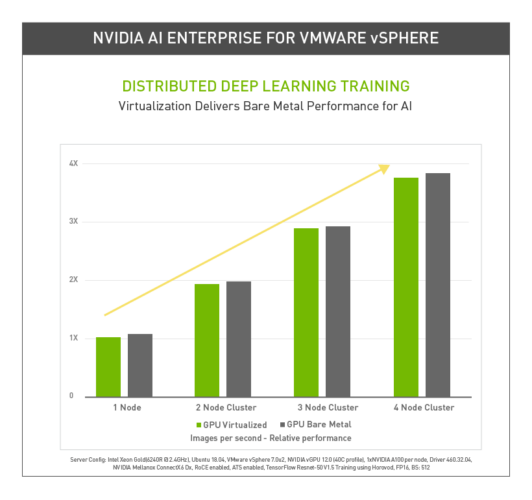
AI workloads come in all sizes with a wide variety of data requirements. Some process images, like live traffic reporting systems or online shopping recommender systems. Others are text-based, like a customer service support system powered by conversational AI.
Training an AI model can be incredibly data intensive and requires scale-out performance across multiple GPUs in multiple nodes. Running inference on a model in deployment usually requires fewer computing resources and may not need the power of a whole GPU.
Through the collaboration between NVIDIA and VMware, vSphere is the only server virtualization software to provide hypervisor support for live migration with NVIDIA Multi-Instance GPU technology. With MIG, each A100 GPU can be partitioned into up to seven instances at the hardware level to maximize efficiency for workloads of all sizes.
Extensive Resources for AI Applications and Infrastructure
NVIDIA AI Enterprise includes key technologies and software from NVIDIA for the rapid deployment, management and scaling of AI workloads in virtualized data centers running on VMware Cloud Foundation.
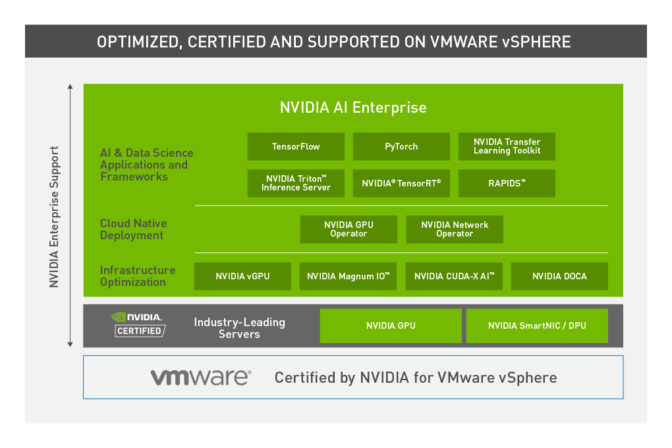
Customers who would like to adopt NVIDIA AI Enterprise as they upgrade to vSphere 7 U2 can contact NVIDIA and VMware to discuss their needs.
For more information on bringing AI to VMware-based data centers, read the NVIDIA developer blog and the VMware vSphere 7 U2 blog.
To further develop AI expertise with NVIDIA and VMware, register for free for GTC 2021.
The post How Suite It Is: NVIDIA and VMware Deliver AI-Ready Enterprise Platform appeared first on The Official NVIDIA Blog.
Maximum Entropy RL (Provably) Solves Some Robust RL Problems
Nearly all real-world applications of reinforcement learning involve some degree of shift between the training environment and the testing environment. However, prior work has observed that even small shifts in the environment cause most RL algorithms to perform markedly worse.
As we aim to scale reinforcement learning algorithms and apply them in the real world, it is increasingly important to learn policies that are robust to changes in the environment.
Broadly, prior approaches to handling distribution shift in RL aim to maximize performance in either the average case or the worst case. Methods such as domain randomization train a policy on a distribution of environments, and optimize the average performance of the policy on these environments. While this approach has been successfully applied to a number of areas
(e.g., self-driving cars, robot locomotion and manipulation),
its success rests critically on the design of the distribution of environments.
Moreover, policies that do well on average are not guaranteed to get high reward on every environment. The policy that gets the highest reward on average might get very low reward on a small fraction of environments. The second set of approaches, typically referred to as robust RL, focus on the worst-case scenarios. The aim is to find a policy that gets high reward on every environment within some set. Robust RL can equivalently be viewed as a two-player game between the policy and an environment adversary. The policy tries to get high reward, while the environment adversary tries to tweak the dynamics and reward function of the environment so that the policy gets lower reward. One important property of the robust approach is that, unlike domain randomization, it is invariant to the ratio of easy and hard tasks. Whereas robust RL always evaluates a policy on the most challenging tasks, domain randomization will predict that the policy is better if it is evaluated on a distribution of environments with more easy tasks.
Announcing PyTorch Ecosystem Day
We’re proud to announce our first PyTorch Ecosystem Day. The virtual, one-day event will focus completely on our Ecosystem and Industry PyTorch communities!
PyTorch is a deep learning framework of choice for academics and companies, all thanks to its rich ecosystem of tools and strong community. As with our developers, our ecosystem partners play a pivotal role in the development and growth of the community.

We will be hosting our first PyTorch Ecosystem Day, a virtual event designed for our ecosystem and industry communities to showcase their work and discover new opportunities to collaborate.
PyTorch Ecosystem Day will be held on April 21, with both a morning and evening session, to ensure we reach our global community. Join us virtually for a day filled with discussions on new developments, trends, challenges, and best practices through keynotes, breakout sessions, and a unique networking opportunity hosted through Gather.Town .
Event Details
April 21, 2021 (Pacific Time)
Fully digital experience
-
Morning Session: (EMEA)
Opening Talks – 8:00 am-9:00 am PT
Poster Exhibition & Breakout Sessions – 9:00 am-12:00 pm PT -
Evening Session (APAC/US)
Opening Talks – 3:00 pm-4:00 pm PT
Poster Exhibition & Breakout Sessions – 3:00 pm-6:00 pm PT -
Networking – 9:00 am-7:00 pm PT
There are two ways to participate in PyTorch Ecosystem Day:
-
Poster Exhibition from the PyTorch ecosystem and industry communities covering a variety of topics. Posters are available for viewing throughout the duration of the event. To be part of the poster exhibition, please see below for submission details. If your poster is accepted, we highly recommend tending your poster during one of the morning or evening sessions or both!
-
Breakout Sessions are 40-min sessions freely designed by the community. The breakouts can be talks, demos, tutorials or discussions. Note: you must have an accepted poster to apply for the breakout sessions.
Call for posters now open! Submit your proposal today! Please send us the title and summary of your projects, tools, and libraries that could benefit PyTorch researchers in academia and industry, application developers, and ML engineers for consideration. The focus must be on academic papers, machine learning research, or open-source projects. Please no sales pitches. Deadline for submission is March 18, 2021.
Visit pytorchecosystemday.fbreg.com for more information and we look forward to welcoming you to PyTorch Ecosystem Day on April 21st!
Artists: Unleash Your Marble Arts in NVIDIA Omniverse Design Challenge
Artists, this is your chance to push past creative limits — and win great prizes — while exploring NVIDIA Omniverse through a new design contest.
Called “Create with Marbles,” the contest is set in Omniverse, the groundbreaking platform for virtual collaboration, creation and simulation, and based on the Marbles RTX demo that first previewed at GTC last year and showcases how complex physics can be simulated in a real-time, ray-traced world.
In the design challenge, artists can experience how Omniverse is transforming the future of real-time graphics. The best designed sets will win fantastic prizes: the top three entries will receive an NVIDIA RTX A6000, GeForce RTX 3090 and GeForce RTX 3080 GPU, respectively.
Creators from all over the world are invited to experiment with Omniverse and take the first step by staging a scene with all the objects in the original Marbles demo. No modeling or animation is required — challenge participants will have access to over 100 Marbles assets, which they can use to easily assemble their own scene.
The “Create with Marbles” contest is the perfect opportunity for creators to dive into Omniverse and familiarize themselves with the platform. Install Omniverse Create to access any of the available Marbles assets. Leverage the tools built into Omniverse Create, or pick your favorite content creation application that’s available on Omniverse Connector. Then render photorealistic graphics using RTX Renderer, and submit your final scene to showcase your work.
Explore Omniverse and use existing assets to unleash your artistic creativity through scene composition, camera settings and lighting.
Entries will be judged on various criteria, including the use of Omniverse Create and Marbles assets, the quality of the final render and overall originality.
Guest judges include Rachel Rose, the research and development supervisor at Industrial Light & Magic; Yangtian Li, senior concept artist at Singularity 6; and Lynn Yang, freelance concept artist and matte painter.
Deadline for submissions is April 2, 2021. The winners of the contest will be announced on the contest winners page in mid-April.
Learn more about the “Create with Marbles” challenge, and start creating in Omniverse today.
The post Artists: Unleash Your Marble Arts in NVIDIA Omniverse Design Challenge appeared first on The Official NVIDIA Blog.

